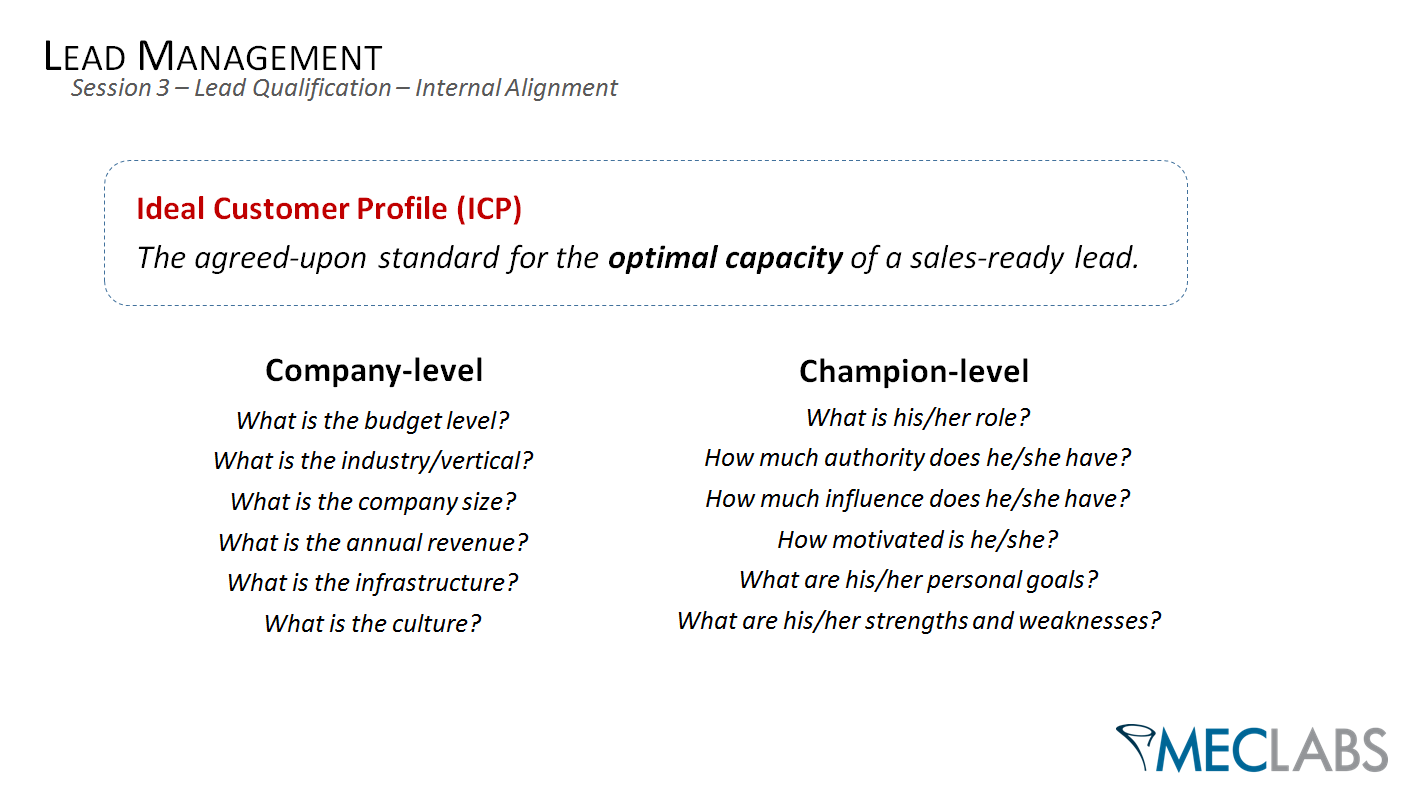Lead Management: 4 principles to follow
Originally published on B2B LeadBlog
I’m at MarketingSherpa Lead Gen Summit 2013  in San Francisco on day one, live blogging the Lead Management Workshop that features a dive into larger topics including lead capture, lead qualification and lead nurture.
in San Francisco on day one, live blogging the Lead Management Workshop that features a dive into larger topics including lead capture, lead qualification and lead nurture.
Flint McGlaughlin, Managing Director, MECLABS, presented the introduction to the workshop, and I’ve now had the opportunity to speak with Brandon Stamschror, Senior Director of Content Operations, MECLABS, and co-author of Lead Generation for the Complex Sale.
The main principles of the Lead Management Workshop were pulled from that book.
Brandon explains, “We updated the workshop material with a lot of the discoveries we’ve made over the past five or six years. It’s infused with MECLABS customer psychology process, so the workshop is really the best of both worlds – meaty lead generation strategy and tactics coming at it through the customer theory perspective that MECLABS has pioneered.”
Key principles of lead management
At the fundamental level, lead management is guided by four key principles:
1. Leads are people, not targets – Brandon says this goes back to the difference between company logic and customer logic. The focus should be on the customer.
2. People are not falling into the funnel, they are falling out – “It creates an intriguing, and I think important, model about how to rethink the traditional marketing funnel,” Brandon explains. “Everyone thinks with a funnel people are going in and narrowing down and that’s not really the case.” The inverted funnel shows the pipeline is more of a climb, with micro-conversions all throughout the process.
3. We are not optimizing webpages or call scripts, we are optimizing thought sequences – this means getting into the psychology of the customer and understanding those thought sequences to achieve the desired conversion – whether it’s a click, a filled-out form, or even a sale.
4. To optimize thought sequences, we must enter into a conversation and guide it toward a value exchange – Brandon says this means the perceived value of the marketing goal must be greater than the perceived cost. An example would be a Web form. The cost is giving up information, the value is what that person receives in return for providing that information.
The entire process of lead management is based on the concept of the inverted funnel, and the idea that the buyer’s pipeline requires a series of “micro-yes(s)” before getting to that “macro-yes” in the form of the final conversion-to-sale.
“There are all the little micro-yes(s) that you’re having,” Brandon explains. “A marketer may not be able to look at all the micro-yes(s) in their funnel on day one, but as they start to break down each one of those micro-yes(s) and start to look at what the perceived value and perceived cost is at each stage, that marketer is putting themselves in the mindset of the customer over the company.”
The ideal customer profile
In the lead qualification section of the workshop, understanding the ideal customer is a key concept.
Brandon says this is a place where marketers are not focused enough.
“You’re truly defining your ideal customer profile,” he says. “That ideal customer profile should be informed by your data. If you have contacts or companies on your list that don’t meet that ideal customer profile, then they shouldn’t be on your list. Or, you shouldn’t be marketing to them.”
To provide a set of guidelines for database form fields you might find valuable, here are two lists from the workshop.
Data to be collected
Basic:
- Company Information: Industry type, annual revenue, number of employees, URL, general contact info, etc.
- Champion Information: Number of contacts, roles and titles, level of authority/influence, contact information, etc.
- Relationship History: Number of touch points, type of touch points, records of correspondence (what was said), etc.
- Current Lead Status: Place in the funnel, lead scores, last actions, next steps, etc.
Advanced:
- Engagement Metrics: Email opens, webpage visits, clickthrough, types of articles downloaded, etc.
- Business Intelligence: Competitive data, industry trends, organizational changes, press releases, articles, quarterly reports, etc.
- Life-Cycle KPIs: Average sales cycle, longest/shortest cycle, touch point clusters, lead source and touch point contribution reporting, etc.
- Trend and ROI Reports: Lead flow, dials to disqualification, dials to leads, email success rates, revenue per customer, lead costs at various funnel stages, etc.
- All Communication Records: Track, report and archive all email messages, calls and voicemails from contacts that can be associated with accounts or companies.
Keep in mind that these are all guidelines, and your business needs will determine the form fields that are most valuable to your marketing needs, but both the basic and advanced data field lists provide a starting point to begin creating your ideal customer profile.
Related Resources:
Infographic: Customer experience in the digital age
Customer-centric Marketing: 7 triggers to engage customers and build loyalty
Online Marketing: 4 sources of customer insight on your website
Categories: Lead Generation B2B LeadBlog











